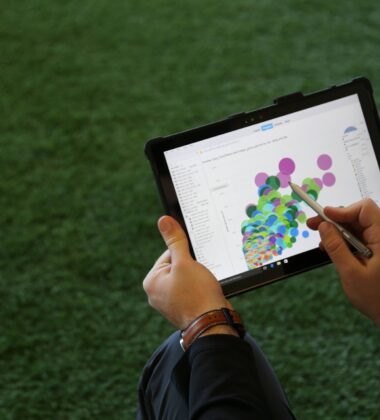Introduction

As major browsers like Safari, Firefox and Chrome are blocking third party cookies and trackers more and more the landscape of digital marketing is undergoing a seismic shift. Marketers are looking for new ways to understand their customers journey and attribution in general and personalization and audience creation is becoming more difficult.
Leveraging first-party customer data with an identity graph can help fill the gap created by stricter privacy measures and regulations.
This give marketers a tool to deliver tailored experiences to their customers and audiences.
Why is an identity graph more important than ever?
There are many good reasons why marketing teams should rely on identity graphs:
The current shift to a cookie-less future and stricter privacy regulations, combined with the fact that most people use multiple devices, are why they are becoming more popular than ever.
Over the years third party cookies have been used to track visitors across different websites, building up a detailed profile and enabling advertisers to deliver targeted ads based on browser history and interests. The recent move by Google to block third party cookies in their Chrome browser was just the latest step by a major browser to comply with, mostly, EU regulators.
It’s important to understand that not all cookies are disappearing. First-party cookies, cookies set from the same domain as the website, are still there. However, Apple’s Safari Browser with it’s Intelligent Tracking Prevention has over the years made large steps to cut the lifetime of cookies set by known trackers, even if they’re first party cookies. This means that even if your analytics cookie is set as a first party it might be deleted after a day or a week. As you can imagine this affects your marketing attribution and new vs returning visitor data.
Example of a use case for an identity graph:
Day of Visit & Action | No Identity Graph | Identity Graph |
| Day 1 Shopper visits your site from a Facebook or Google Ad | Click ID saved in browser cookie or session storage. | Click ID saved on your server |
| Day 7 Shopper browses site | Safari or IOS expire the cookie and session storage. Click ID is deleted | Click ID is retained. |
| Day 8 Shopper returns to your site and purchases | No Click ID is sent with purchase. | Returning visitor is recognized as a returning visitor and click ID is sent with the purchase. |
| Facebook and Google cannot match the purchase to an ad click | Click ID is matched to a ad click and purchase is attributed correctly. |
Another issue that is solved by an identity graph is the use of multiple devices by a visitor of your website. We’re living in a multi device world where most users have different devices which they use throughout the day. As a marketer understanding the customer journey across these different devices is extremely difficult, even in a world where cookies were still a thing.
Further down this article we’ll show you some use cases of how an identity graph can be used to solve these different problems.
How does an identity graph solve these issues?
At its core an identity graph is a table with information about your customers, users or leads.
This table is used to link different contact points that your organization might have had with this person together over a period of time.
I.e. When a lead submits a lead form with their email on January 12th, and then becomes a paying customer a couple of weeks or months later, organizations depending on only cookies or user id’s might not be able to understand that this person is one and the same.
Examples of other data an identity graph can contain:
- Transaction ID
- Phone
- Email address
- Address
- Zip Code
- User ID
- Device ID
- Cookie ID

An identity graph contains all of your anonymous identifiers like and links them to known identifiers. The purpose of an identity graph is to update in real-time as more data becomes available to ensure you have the most accurate and up-to-date view of your customers to power your most complex personalization use cases.
To tie all these data points together a process called identity resolution is used. This process determines the rules for how to stitch all the different data points across all those different systems and touch points together. At its core this is a data modeling technique which merges and deduplicates data by using deterministic or probabilistic matching. Once that is done the process standardizes this data in a centralized platform, i.e. a data warehouse.
Use cases of an identity graph
The main function for an identity graph is consolidating customer data into one table. However the real strength lies in how this new data is integrated. Here are some use cases.
- Web Analytics: Having a unified table behind your analytics data means that your long term and historical data will be more accurate and it will be easier to understand and act on user behavior and engagement.
- Customer Journey: Mapping your customer's journey will be more accurate now that you have a complete overview of your customers behavior and touchpoints across different systems and events. This allows for a precise understanding of where customers engage within your marketing and sales funnels.
- Audience Management: As you know have a more complete view of your customers’ behavior your marketing audiences will be more accurate. This can expand your reach and give you access to new targeting opportunities.
- Personalization: Highly detailed audiences can also be used for real-time on-site personalization, targeted advertising, personalized emails and improved recommendations.
- Security and Compliance: Having a centralized view of your customers data also makes it easier to implement proper data governance and manage your customer’s preferences regarding marketing and data storage.
Identity Graph Solutions

In many cases your marketing team is already using some proprietary identity graphs.
Both Facebook and Google heavily rely on data from their logged in users, emails and phone numbers sent via conversion events and are using this data to model user journeys and attribution.
However for many organizations data ownership is important and this will be even more so in the future and making your data actionable is more and more difficult without your own identity graph.
Adobe Experience Platform
Adobe Experience Platform is probably one of the most complete identity resolution solutions. Their Identity Service is an integral part of their platform and pulls data from Adobe Analytics to create real-time profiles to be easily used for personalization and a detailed identity graph used to create audiences and ads targeting.
Pros | Cons |
|
|
Self-Managed Data Warehouse
When your organization is not ready to go full-in on Adobe’s ecosystem or has reasons to 100% own their own data, it’s an excellent choice to create your own identity resolution solution in your own data warehouse. This gives you full control and ownership over your data and a lot of flexibility.
Pros | Cons |
|
|
Need To Pick & Implement An Identity Graph But Don't Know How?
No worries, that's exactly what we do and can help you with. Talk directly with technical know how by contacting us. No sales pitch.





















